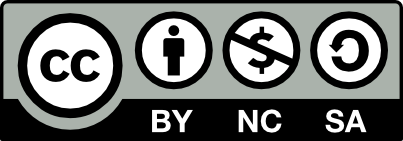Checking for non-preferred file/folder path names (may take a long time depending on the number of files/folders) ...
This resource contains some files/folders that have non-preferred characters in their name. Show non-conforming files/folders.
This resource contains content types with files that need to be updated to match with metadata changes. Show content type files that need updating.
| Authors: |
|
|
|---|---|---|
| Owners: |
|
This resource does not have an owner who is an active HydroShare user. Contact CUAHSI (help@cuahsi.org) for information on this resource. |
| Type: | Resource | |
| Storage: | The size of this resource is 874.8 KB | |
| Created: | Dec 26, 2018 at 10:23 p.m. (UTC) | |
| Last updated: | Aug 30, 2019 at 3:53 a.m. (UTC) (Metadata update) | |
| Published date: | Aug 30, 2019 at 3:53 a.m. (UTC) | |
| DOI: | 10.4211/hs.440e89b8cc8c4c43bdbc6176e8f38a70 | |
| Citation: | See how to cite this resource |
| Sharing Status: | Published |
|---|---|
| Views: | 3550 |
| Downloads: | 54 |
| +1 Votes: | Be the first one to this. |
| Comments: | No comments (yet) |
Abstract
Biogeochemical reactions within intertidal zones of coastal aquifers, induced by the mixing between fresh groundwater and saline seawater, have been shown to alter the concentrations of terrestrial solutes prior to their coastal discharge. In organic-poor sandy aquifers, the input of marine organic matter from infiltrating seawater has been attributed to active biogeochemical reactions within the sediments. However, while the seasonality of surface water organic carbon concentrations (primary production) and groundwater mixing patterns have been well-documented, there has been limited speculation on the contributions of particulate organic carbon pools within the sediments that arise from transient hydrologic conditions. To understand the relationship between physical movements of the circulation cell and the seasonal migration of geochemical patterns, beach porewater and sediment samples from six field sampling events spanning two years were analyzed. While oxygen saturation, oxygen consumption rates, and silica distributions closely followed the seasonally-dynamic salinity, other chemically-reactive parameters (pH, ORP) and nutrient characteristics (N distributions, denitrification rates, reactive organic carbon distributions) were unrelated to contemporaneous salinity patterns. Particulate organic matter was distributed in pools within the aquifer due to the filtration effect of sediments, contributing to the divergence of chemical patterns from salinity patterns via nutrient release and leaching. Together, the results present the asynchronous movement of chemical conditions to salinity patterns due to the divergent transport pathways between solutes and particles arising from transient hydrologic forcing.
Subject Keywords
Coverage
Spatial
Temporal
| Start Date: | |
|---|---|
| End Date: |
Content
Related Resources
| This resource is referenced by | Kim, Kyra H., Holly Michael, Erin Field, and William Ullman, 2019, Hydrologic shifts create complex transient distributions of particulate organic carbon and biogeochemical responses in beach aquifers, JGR Biogeosciences |
Credits
Funding Agencies
This resource was created using funding from the following sources:
| Agency Name | Award Title | Award Number |
|---|---|---|
| National Science Foundation | Hydrological Control of Particle Entrainment and Nitrogen Cycling in Beach Aquifer Mixing and Reaction Zones | EAR-1246554 |
How to Cite
This resource is shared under the Creative Commons Attribution-NoCommercial-ShareAlike CC BY-NC-SA.
http://creativecommons.org/licenses/by-nc-sa/4.0/

Comments
There are currently no comments
New Comment